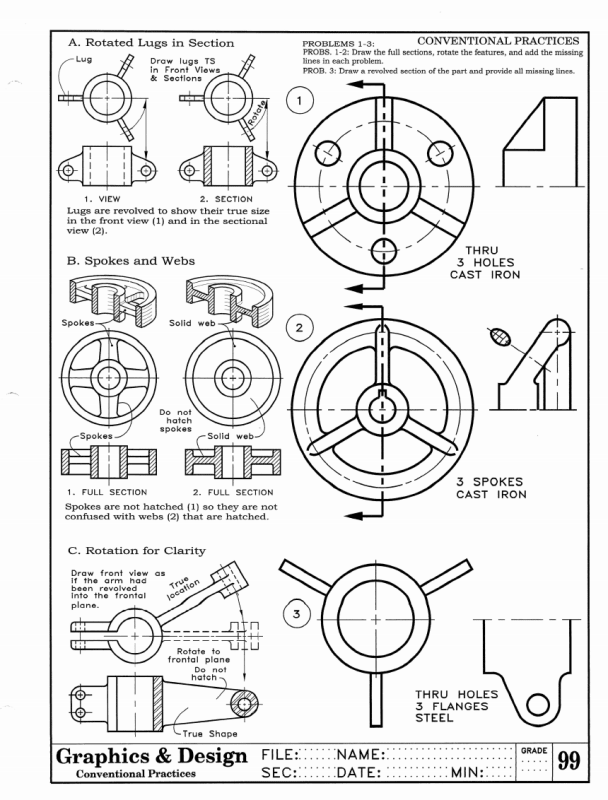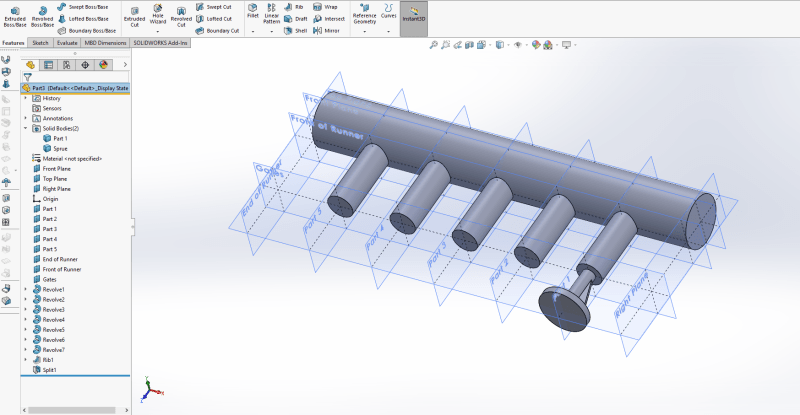I'm working with castings, so I have a drawing made of the casting, and then a drawing of various machined parts from the same casting. WIth the castign dwg, when I section the casting, I can exclude the ribs of the casting from the section.
The machined parts are a derived part, so the first feature of the derived part is just the body of the casting. Is there any way to exclude the ribs from the section when I make a drawing of this part? It's not obvious, and I want to get away from using sketched lines and hatch boundaries in the view because that sucks.
The machined parts are a derived part, so the first feature of the derived part is just the body of the casting. Is there any way to exclude the ribs from the section when I make a drawing of this part? It's not obvious, and I want to get away from using sketched lines and hatch boundaries in the view because that sucks.






